Underneath one of the palm trees that flank the seafront promenade of Dili, Timor-Leste’s capital, Luis stands bare-chested, with a cheap clove cigarette dangling from his lips and tales of unemployment to share with passing tourists. The 19-year-old, who admits he barely had six years of formal education, also has the ability to sum up Timor-Leste’s economic woes in three sentences: “Our country’s problem is oil. Maybe for now, it is good, but for the future, maybe not. It is both good and bad.”
Across town, the walls of Charles Scheiner’s office are decorated with printouts of graphs and tables, illustrations of what Luis means. “Look,” said the researcher for the non-governmental Institute for Development Monitoring and Analysis (La’o Hamutuk), as he guided his hands across the wall. “We’ve already gone through three-quarters of the gas and oil reserves that we have or are currently tapping.”
Gaining its independence in 2002, Timor-Leste was given a well-needed financial shot in the arm through the tapping of oil and gas reserves in its waters. However, “it is today in the top four of the most oil-dependent countries in the world”, said Scheiner, pointing to another printout. “Petroleum accounts for more than 80% of the country’s GDP and 95% of the state budget.”
This 95% is drawn from what is saved in the Petroleum Wealth Fund, a state-owned investment fund that saves and invests the oil and gas revenues Timor-Leste receives, which has garnered much international praise since it was created in 2005. But, according to reports by La’o Hamutuk, the $16 billion in today’s pot will be exhausted within ten years.
“We’re facing a crisis when the fund runs out and the government will have to cut its budget by 80%,” said Scheiner. For any country, it would be hard to imagine the effects of such a cut, but for Timor-Leste, it could be catastrophic.
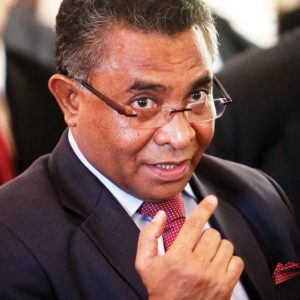
Strolling around even the smallest of stores in the country reveals why: chickens imported from Brazil, rice from Vietnam, eggs from Singapore and vegetables from the Netherlands. In 2013, according to government statistics, more than $180m went to its former coloniser, Indonesia, for everything from bottled water, cigarettes and instant noodles to canned drinks and canned fish. “As well as being dependent on petroleum, we’re also dependent on imports,” said Scheiner.
Last year, Timor-Leste spent $982m on imports, the Statistics Directorate of the Ministry of Finance estimates. However, excluding petroleum, it exported a mere $91m, resulting in a trade deficit of $891m – more than half the entire yearly state budget.
This has much to do with the country’s turbulent past. Centuries of colonisation, first by Portugal and then Indonesia, left much of Timor-Leste’s infrastructure undeveloped.
The Portuguese, for example, took much of the country’s natural resources, such as sandalwood, beeswax and spices, but gave little in return. Indonesia, to some extent, did more in the way of development during its 24-year occupation, which was marred by the massacring of innocents and serious human rights abuses. Furthermore, its authorities destroyed much of what infrastructure was left – schools, hospitals, farms and factories – before leaving the country in the late 1990s. A 2002 World Bank report estimates that as much as 70% of the country’s “physical assets” were destroyed or unusable by the turn of the 21st Century.
Nation-building since independence has, in some aspects, also been limited. Though much progress has been made and should be applauded, according La’o Hamutuk half of Timor-Leste’s population continues to live in poverty, 41% of working-age citizens are unemployed, 28% are subsistence farmers or fishermen and private sector growth remains nascent. Small-scale coffee production accounts for more than 90% of the country’s non-oil-based exports, while the private sector remains dependent on funding from the state. Such statistics led one academic to write in a 2014 opinion piece for Foreign Policy that “Timor-Leste is quietly on the path of becoming a failed state.”
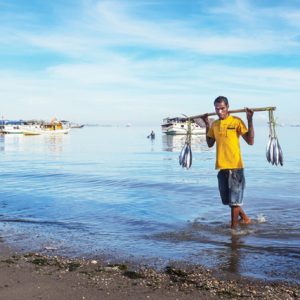
The government was not happy and responded with its own piece for the same publication the following week. “Pronouncements that Timor-Leste is imminently running out of oil and time are ill-formed and illogical,” it read. The author of the piece was Agio Pereira, the minister of state, as well as president of the Council of Ministers and also the government’s official spokesman.
Dismissing warnings as pessimistic scaremongering and claiming that there is more oil and gas just waiting to be tapped are typical of the way the government has responded to the potential crisis for years, said a political commentator who requested anonymity.
“There may be more gas and oil,” said Hans Beck, senior economist at the World Bank in Timor-Leste, “but even the government does not factor it into its budget.” Indeed, there may be enough resources to swell the Petroleum Wealth Fund for another decade or two but, as many commentators point out, a nation cannot build an economy based on presumptions.
However, according to Beck, recently there has been a “growing awareness that something needs to be done” to ensure the economy is viable after oil runs out. An indication of this can be found within the pages of the Public Expenditure Review, released in March and co-produced by the Ministry of Finance and the World Bank. It states that with current government spending the Petroleum Wealth Fund will be empty within 15 years.
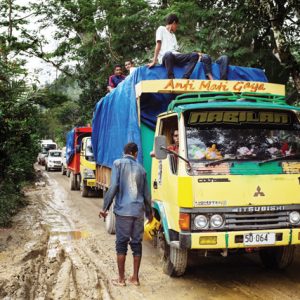
“The report actually validates some of the concerns raised by La’o Hamutuk and Scheiner,” said Beck. “And, although the estimates are not as radical as theirs, it does say that at current medium-term spending, the petroleum fund will run out. This is against what the government has believed for a long time. Its view is to never have the fund run out, or at least keep it running for a number of generations.” He described the admission as “remarkable”.
For many commentators, there is little doubt why this change has come about. In February, Xanana Gusmão, the former independence leader and patriarch of independent Timor-Leste, stepped down as prime minister to make way for what he termed “a younger generation”. The new prime minister, Rui Maria de Araújo – hand-picked by Gusmão – is 18 years his junior. However, according to Michael Leach, associate professor in politics and public policy at the Swinburne University of Technology in Australia, Araújo also “represents a different type of political legitimacy”.
“He is rational-legal in orientation, less reliant on personal history and more dependent on performance and outcomes,” Leach said. Indeed, in his first speech as prime minister, Araújo pledged to “fight the culture of bureaucratisation in public administration”, and promised to build “a new bureaucratic order that is leaner, more professional, more technical and less politicised”.
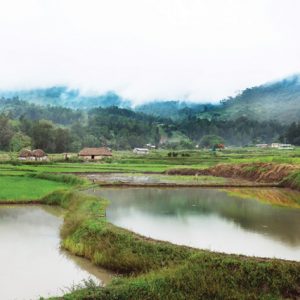
He has also shown himself to be more willing to discuss Timor-Leste’s future pitfalls. “We are aware of the risks and we are working towards managing those risks,” he said in an interview with the Nikkei Asian Review in March.
Yet not everyone is as elated about the reshuffle’s impact on the economic outlook. “There is obviously a growing recognition that resources are finite and changes are necessary,” said Damien Kingsbury, personal chair at Deakin University, Australia, and author of numerous books on Timor-Leste. “But the impact [of the reshuffle] on economic policy has been almost zero. They are just continuing with the previous plan.”
By this, he means the Strategic Development Plan (SDP), launched in 2011, that sets out how Timor-Leste will achieve its goal of upper middle-income country status, with a healthy population and a strong economy, by 2030.
For Kingsbury, this is merely an “aspiration” not based on realistic conditions. Indeed, the Timorese government has not been averse to hyperbole in the past. In a 2010 interview with Monocle, the then-minister of finance, Emilia Pres, proclaimed: “If the first decade of the 21st Century was dominated by China then I feel the second decade will be for Timor-Leste.” Whether this was a rare moment of ministerial black humour or a supreme example of the government’s overconfidence is unclear.
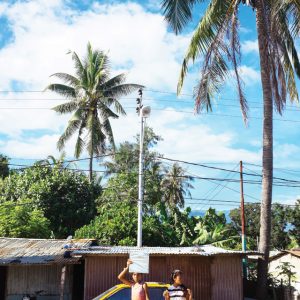
“Aspirationally, Timor-Leste is going to become educated and industrious – the next Singapore of Southeast Asia. But realistically, that is very unlikely,” said Kingsbury.
For many, this disconnect between what Timor-Leste aspires to achieve and what is realistically feasible is a major impediment as it prepares for a time without oil and gas funds.
According to Kingsbury, the government’s decision not to reduce this year’s budget despite massive drops in the price of oil, which will no doubt reduce expected future earnings, is one example that the government has not changed its stripes; another is its determination to push ahead with “grandiose” projects. The SDP identifies a number of megaprojects that, it claims, will lead Timor-Leste to a prosperous future.
“We shouldn’t be spending a lot of money on trying to be competitive in areas we cannot compete in,” said Scheiner. For example, he continued, Timor-Leste would not be able to compete with its neighbours in the luxury tourism market, yet the government and foreign investors “keep on talking about” building five-star hotels.
There have also been questions raised about the cost-effectiveness of the Special Market Zone that is planned in Oecussi, an isolated enclave of Timor-Leste in Indonesian-controlled West Timor. So far $133m has been invested in the project, often spent on courting foreign companies and advertising its development, but La’o Hamutuk has questioned whether the expected future investment of $4 billion required for the project is economically justifiable since foreign direct investment remains small – just $47m in 2011, according to the latest figures available from the IMF.
In order to pay for the megaprojects and the other plans included in the SDP, La’o Hamutuk claims that either state spending must continue at its current pace and possibly increase, or the country would require considerable quantities of loans. In addition to its current loans, Timor-Leste expects to borrow $560m from various sources between 2015 and 2018.
“Implementing the SDP will require billions of dollars in loans,” stated a recent report by La’o Hamutuk. “Even at concessional rates, repaying these loans will permanently reduce money in the Petroleum Wealth Fund, and Timor-Leste will have to make loan repayments before spending money on people’s needs or developing other sectors.”
Instead, Scheiner believes that the path to a sustainable future is with smaller projects focused on the country’s strengths, such as agriculture. “If agriculture can be made more productive, it would provide employment and mean we won’t starve when oil and gas run out and we cannot afford imports.”
Some Timorese agree. Armindo da Silva joined the independence movement as a 12-year-old boy, providing the guerrilla soldiers with food and shelter in his rural hometown. “We didn’t fight for money, or even for ourselves,” he told Southeast Asia Globe. “We fought for the future and for our children. I support the [reshuffled] government, I support the younger generation, but it is important they focus on the rural areas, not just the capital. Life remains difficult in these places, but they are the [backbone] of Timor-Leste.”
While Kingsbury and others may cast doubt over the ability of the new cabinet to move away from past “aspirational” planning, Beck believes that the government has made some tough decisions over the past few months and, to some extent, is moving away from overspending and looking to focus on sustainability.
“Indications are that the 2016 budget will come down in size, perhaps to a more sustainable $1.3 billion instead of this year’s $1.5 billion,” he said.
The Public Expenditure Review also states that the government does not need to completely follow the SDP, thereby reducing expenditure for infrastructure. “The full implementation of all SDP projects may not be necessary to achieve upper middle-income status,” it reads. Indeed, in his first speech as prime minister, Araújo stated that he would halt the “waste and ineffective use of public monies”.
Then there is the case, according to Beck, that the reshuffled government has identified agriculture and tourism as the two key pillars for economic diversification and is making strides to invest in these sectors. “Given that poverty is most concentrated in rural areas, and given that you need to employ people and agriculture is labour intensive, it is definitely an area that needs focus,” said Beck. “We need to raise production levels of staples such as rice and maize and of essential legumes – but really, we need to replace imports to feed the nation.”
According to Pereira’s Foreign Policy article, Timor-Leste is on track to self-sufficiency in rice production by 2020.
Beck added that while the potential for tourism has been “under-realised” for a long time, changes are now afoot. “The strategy has thus far been driven by events – the Tour de Timor, marathons, pageants, etc. But it’s evolving into something more comprehensive, and it’s an area that the private sector is picking up on,” he said.
There is little doubt that Timor-Leste’s substantial investment in urban and rural infrastructure is paying off. Infrastructure spending peaked in 2011 at $534m, half of total expenditure that year. It has come down in recent years but remains high. As a result, its non-oil economy grew at an average of 11.8% annually from 2008 to 2012, according to Ministry of Finance records. Numerous unsuccessful attempts were made inside and outside Timor-Leste to interview representatives from the Ministry of Finance and other related departments.
There are also signs that investments in electricity and transport are paving the way for small-scale foreign investment. Late last year, Heineken signed an MOU with the Timorese government to open a brewery outside Dili, which is expected to employ 200 people and indirectly created 800 more jobs.
Further good news came earlier this year, when the World Bank’s Doing Business report found that Timor-Leste was the most improved country in the world, year-on-year, for the ease of doing business, after reducing the time required to start a business from 94 days to ten.
As Scheiner put it, there is no “magic bullet” for the economic future of Timor-Leste, and there are many paths that must be taken to achieve diversification and self-sustainability. For the recently reshuffled government, and Araújo in particular, there are another two years until the next parliamentary election. It remains to be seen whether Araújo has plans to stand but, nevertheless, his more technocratic, streamlined and business-minded government has the opportunity to lay the foundations for future leaders.
For those derided as pessimists – who might identify themselves as realists – change is happening too slowly. If the optimists are to be believed, Timor-Leste is already clearing a path to a brighter future. For a country that has suffered so terribly under brutal colonial powers, which cut open veins that are finally being healed, one can only hope that the optimists are correct.
Into the Blue: Is there any more oil?
Currently, Timor-Leste receives revenues from two oil and gas reserves in its seas: the Bayu-Undan field, operated by the US firm ConocoPhillips, and the Kitan field, operated by Italian energy company Eni. There are also hopes that another oilfield, the yet-to-be-tapped Greater Sunrise site, will offer a further bounty of petroleum revenues. This is, however, still up in the air and disagreements could delay extraction for years to come.
Australia began explorations on the Greater Sunrise site in the 1960s and has pushed for the area to be considered within its maritime borders. Even before the Portuguese left Timor-Leste in 1975, a controversial deal between Australia and Indonesia put the field 80% within the former’s maritime boundary and 20% in Timor-Leste’s. Over the years this changed, swinging back and forth between greater control by Australia and then Timor-Leste, until a deal in 2006 divided the area, and profits, 50 / 50 between the two countries.
Yet work continues to be delayed. An arbitration case is currently in the courts over the development concept for Greater Sunrise. While energy firms operating the field want a floating plant to be used, Timor-Leste wants to build a pipeline to an onshore plant and refinery, which would allow it to move ahead with its planned Tasi Mane refinery and infrastructure project. Last year, arbitration over the issue was marred by accusations of Australia spying on Timor-Leste and it is still uncertain when, and if, work will begin.
Pátria ou Morte: a history of colonisation
The first Portuguese traders arrived on the island of Timor in the 16th century, but it wasn’t until 1702 that it became a colony, known as Portuguese Timor. Yet it remained an often-neglected trading post. The colonialists took much of the island’s spices, sandalwood and bees-wax, and gave little in return. “God created Timor to give us sandalwood,” said one Portuguese colonialist.
Disputes with the Dutch East Indies – now Indonesia – eventually led to the western half of the island being given to them – a split that continues today. The Portuguese occupation lasted until November 28, 1975, when the Timorese independence movement made a unilateral declaration of independence. This was not to last long.
Little more than week later, Indonesian forces invaded and within a year Indonesia declared the accession of Timor-Leste as its 27th province, called Timor Timur. But the independence movement kept up their struggle in the forests, fighting a guerrilla war against the occupiers.
Despite the fact that more than 102,000 people died during the occupation – a conservative estimate made by the Commission for Reception, Truth and Reconciliation – the international community remained largely mute. This started to change after the Santa Cruz massacre in 1991, when at least 250 pro-independence supporters were killed when Indonesian troops fired on a funeral procession in Dili.
Seven years later, the Timorese people were given a referendum on whether they wanted independence or not. A total of 78% voted in favour. A UN peacekeeping force subsequently took over the administration as the country prepared for independence, which was achieved on May 20, 2002.


